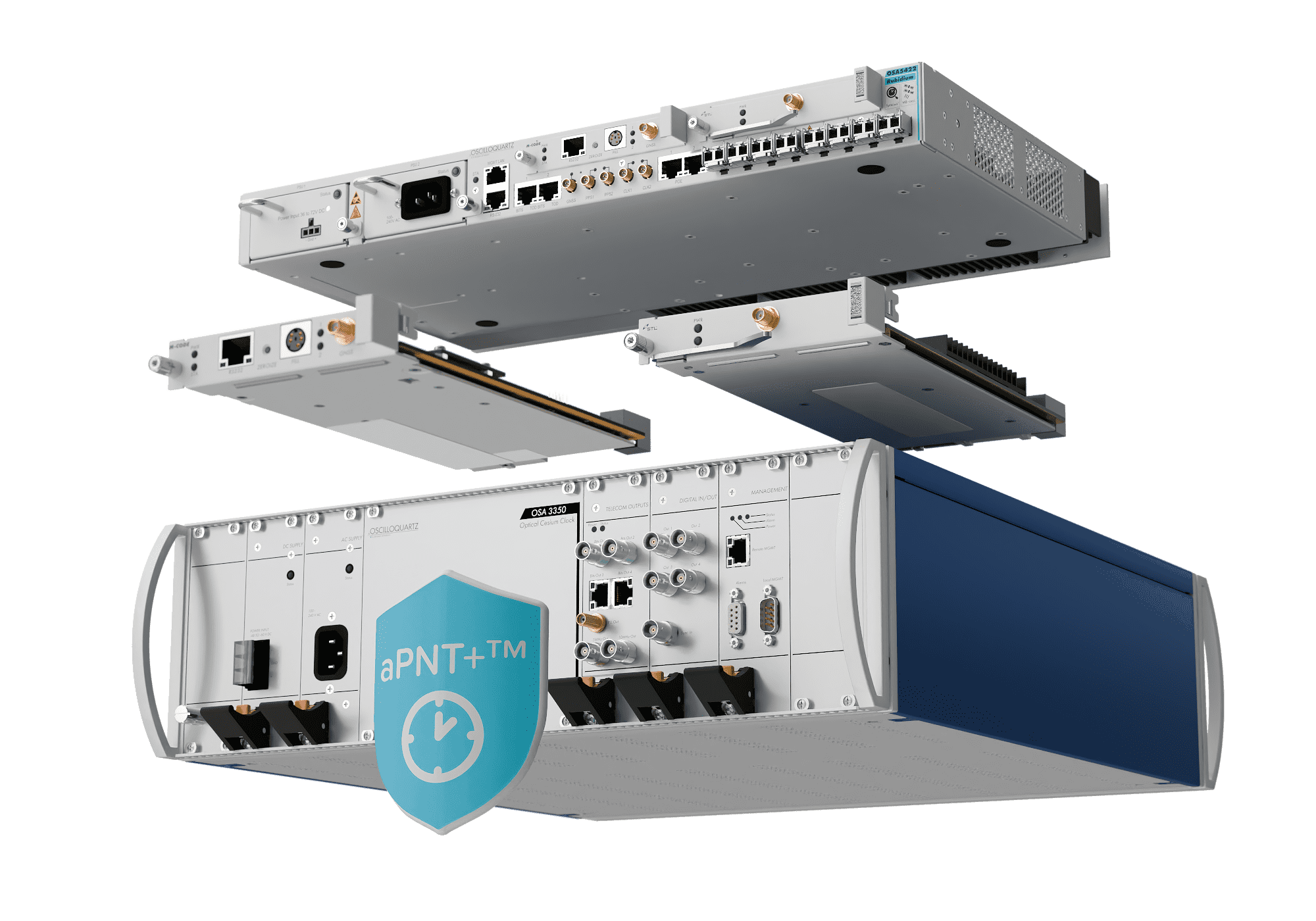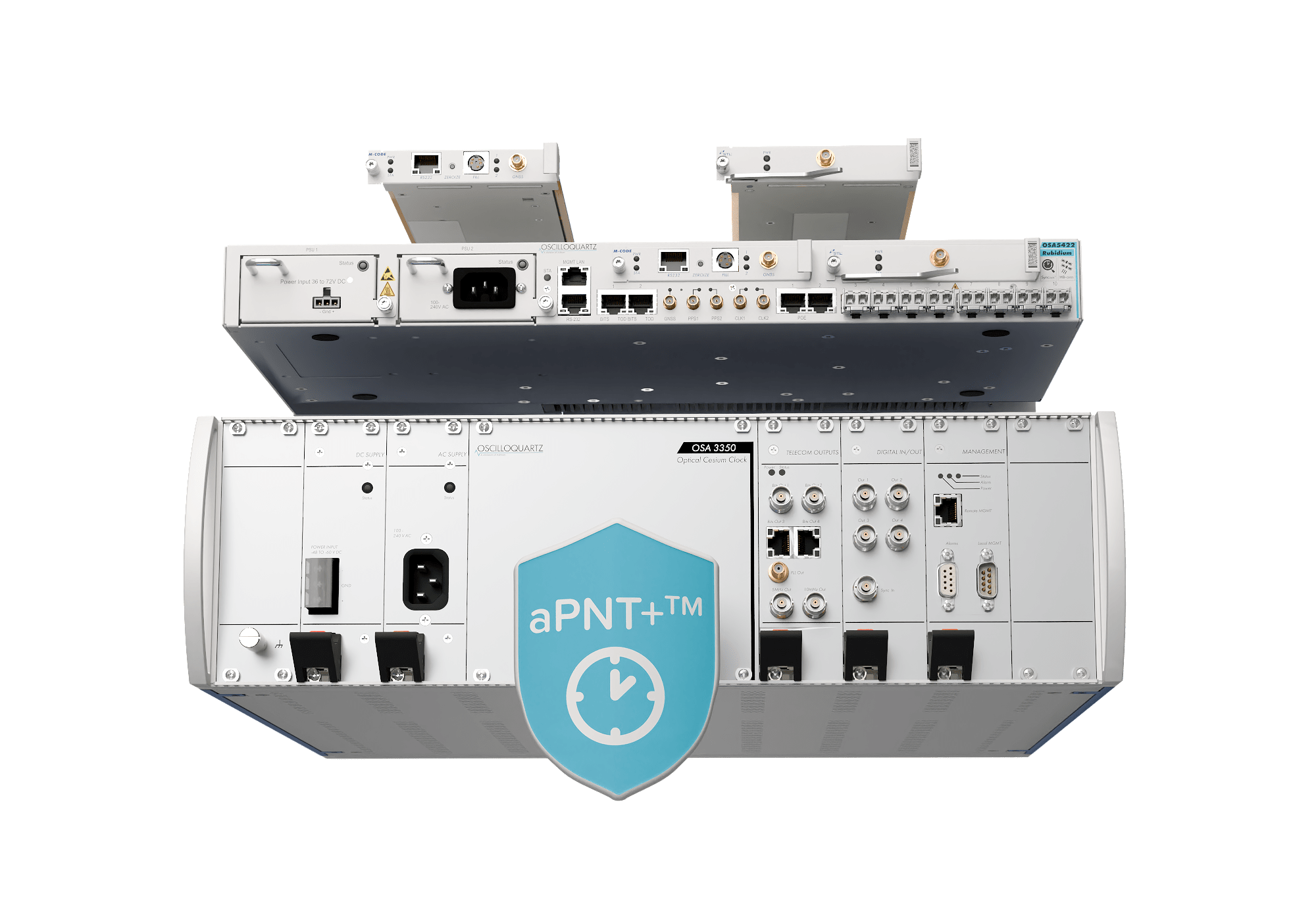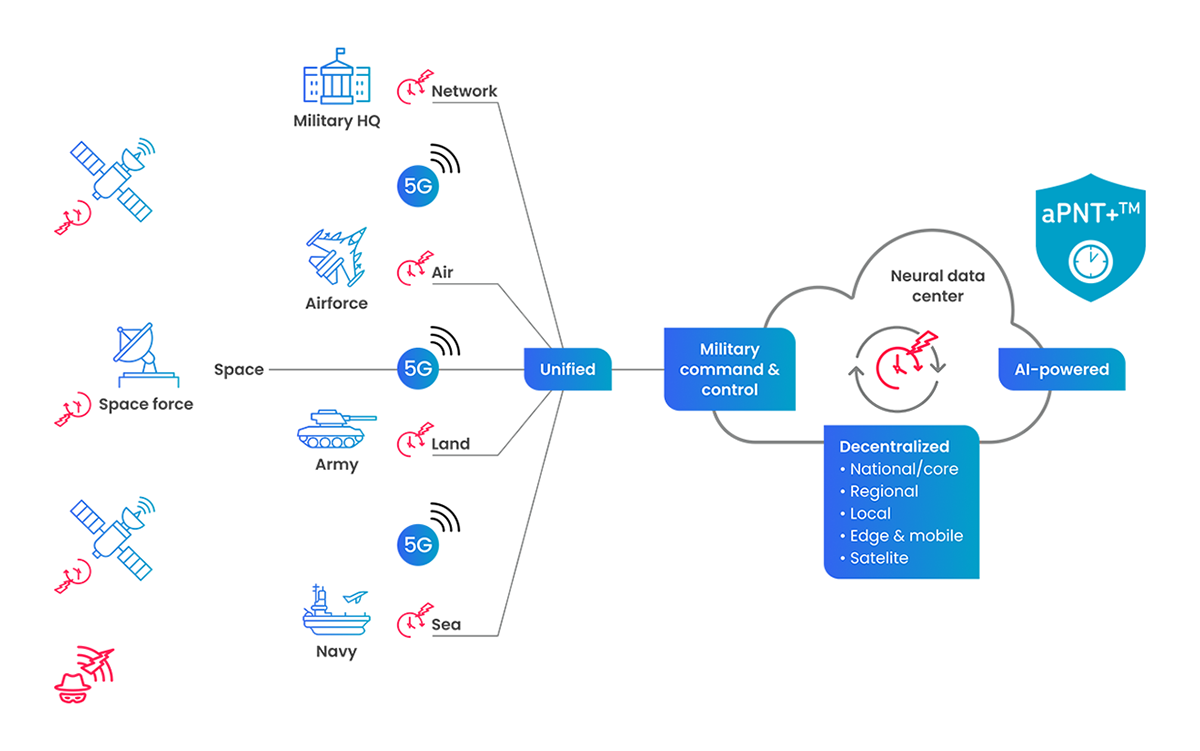Defense networks
GNSS threats and the push for robust PNT defense strategies
Defense applications such as communications, navigation and IED detection depend on GNSS-derived positioning, navigation and timing (PNT) information. However, satellite signals are weak and highly vulnerable to jamming and spoofing cyberattacks. Physical destruction of satellites by ground-launched missiles is now also a major concern. As PNT information is central to national security and the success of military operations, the US, like many other governments around the world, has developed guidelines on the use of technologies that render critical defense infrastructure more robust and secure. The DHS Resilient PNT Conformance Framework sets out four levels of resilience, with adherence to the highest level ensuring critical PNT services suffer no degradation even when GNSS is compromised or unavailable.

A zero-trust, AI-enhanced solution for defense
The Oscilloquartz aPNT+™ platform is a multi-constellation, multi-source, zero-trust solution that sets new standards for resilience, precision and security in PNT networks. Our aPNT+™ suite includes our optical cesium clocks, PTP core and edge grandmasters and our sync assurance software, Ensemble Sync Director. Designed around a three-fold framework of multi-layer detection, multi-source backup and multi-level fault-tolerant mitigation, the platform exceeds the highest levels of resilience set out in DHS guidelines, ensuring end-to-end protection for PNT-dependent applications. What’s more, our aPNT+™ solution harnesses a combination of AI and ML technologies to ensure the uninterrupted flow of PNT information for critical defense networks.

